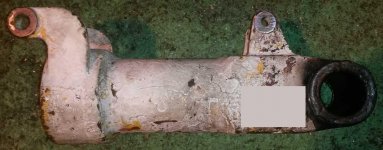Webley91
Cast Iron
- Joined
- Feb 13, 2009
- Location
- London, England
I have this job coming up. These hydraylic cylinders have had the end faces of the bores shown in the photo built up with weld due to wear.
What type of inserts / cutting speed / feeds would you recommend for this? I am intending to do this on a horizontal mill with a dual side / face cutter. This way the cylinder only needs to be set up once, and both sides can be machined. I spoke to my boss about getting a tipped cutter in for this job. We usually deal with Sandvik, so ideally I would be looking for a Sandvik insert.
I have tried machining the faces with a HSS side / face cutter but the finish is very poor and it is very hard on the cutting teeth.
They have been welded using a MIG Welder. As far as I know, standard wire has been used (eg nothing hard).
To give an idea of scale, the bore with the welded faces is roughly 50mm diameter. I haven't actually measured it.

Thanks for any info.
What type of inserts / cutting speed / feeds would you recommend for this? I am intending to do this on a horizontal mill with a dual side / face cutter. This way the cylinder only needs to be set up once, and both sides can be machined. I spoke to my boss about getting a tipped cutter in for this job. We usually deal with Sandvik, so ideally I would be looking for a Sandvik insert.
I have tried machining the faces with a HSS side / face cutter but the finish is very poor and it is very hard on the cutting teeth.
They have been welded using a MIG Welder. As far as I know, standard wire has been used (eg nothing hard).
To give an idea of scale, the bore with the welded faces is roughly 50mm diameter. I haven't actually measured it.

Thanks for any info.


